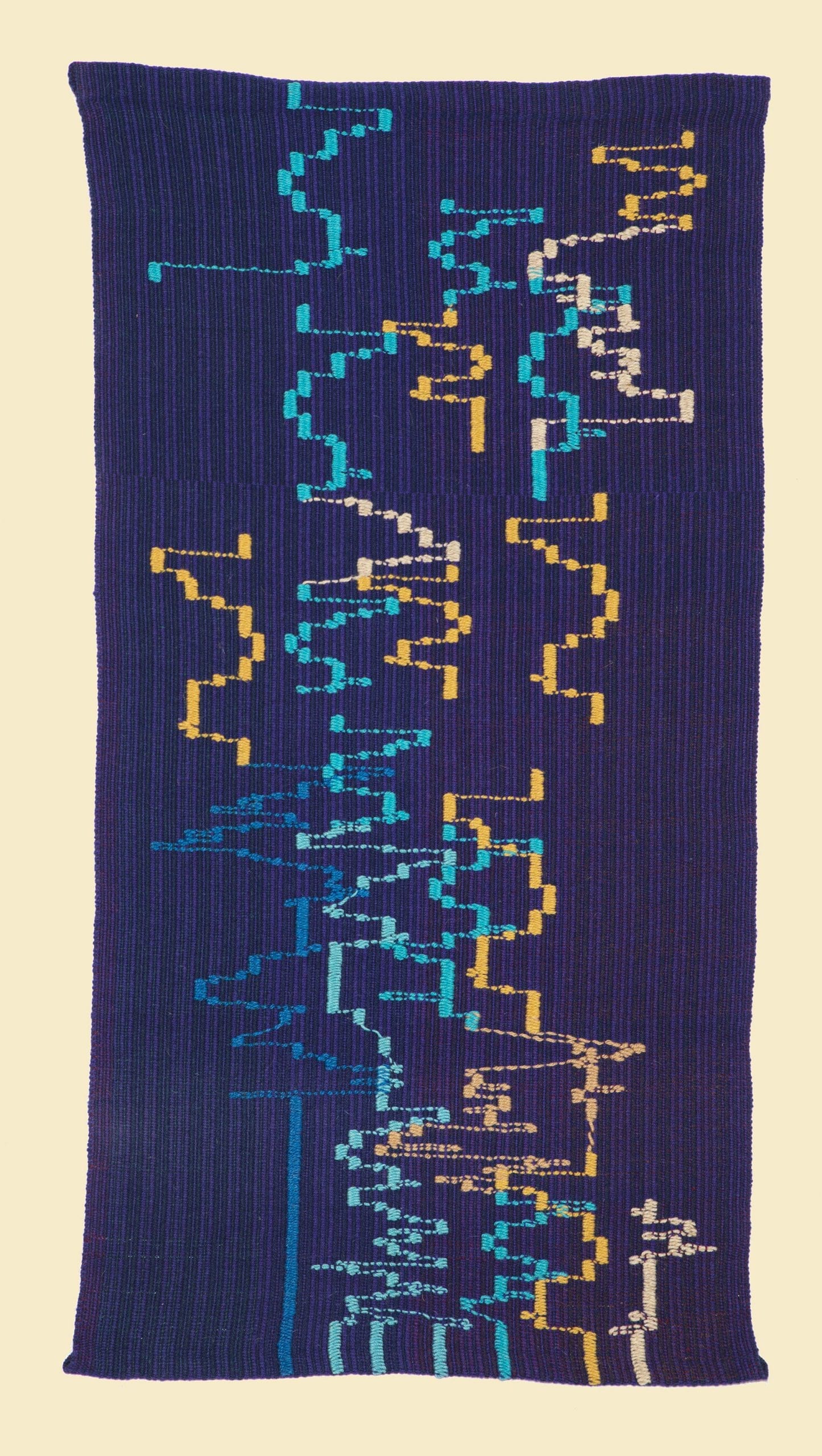Contrapunctus 6
Interested in purchasing “Contrapunctus 6”? Contact the artist here.
“Contrapunctus 6” (C-6) explodes with themes overlapping each other at the very beginning and at ever decreasing intervals. Themes are inverted and original at nearly the same time. From the beginning to end, no theme ever gets a complete say before being interrupted.
After a headlong dash, at last both the original theme and the inverted theme are heard together. It is a cascade of sound and color rushing headlong to this inevitable poinr.
A note about weave structure is necessary.
When I conceived if this project, I realized the visual equivalence for the aural space was the physical area- call it background. I knew I wanted the warp threads to describe a chronatic keyboard of white and black notes but also needing to carry the basic “d minor” color information. However, in weaving, how the threads are interlaced creates different appearances. This meant I could indicate the various types of fugues with different weave structures.
I mention this in the context of trying to equate as much of the sound and structure of the music in visual terms as possible.
Interested in purchasing “Contrapunctus 6”? Contact the artist here.
“Contrapunctus 6” (C-6) explodes with themes overlapping each other at the very beginning and at ever decreasing intervals. Themes are inverted and original at nearly the same time. From the beginning to end, no theme ever gets a complete say before being interrupted.
After a headlong dash, at last both the original theme and the inverted theme are heard together. It is a cascade of sound and color rushing headlong to this inevitable poinr.
A note about weave structure is necessary.
When I conceived if this project, I realized the visual equivalence for the aural space was the physical area- call it background. I knew I wanted the warp threads to describe a chronatic keyboard of white and black notes but also needing to carry the basic “d minor” color information. However, in weaving, how the threads are interlaced creates different appearances. This meant I could indicate the various types of fugues with different weave structures.
I mention this in the context of trying to equate as much of the sound and structure of the music in visual terms as possible.
